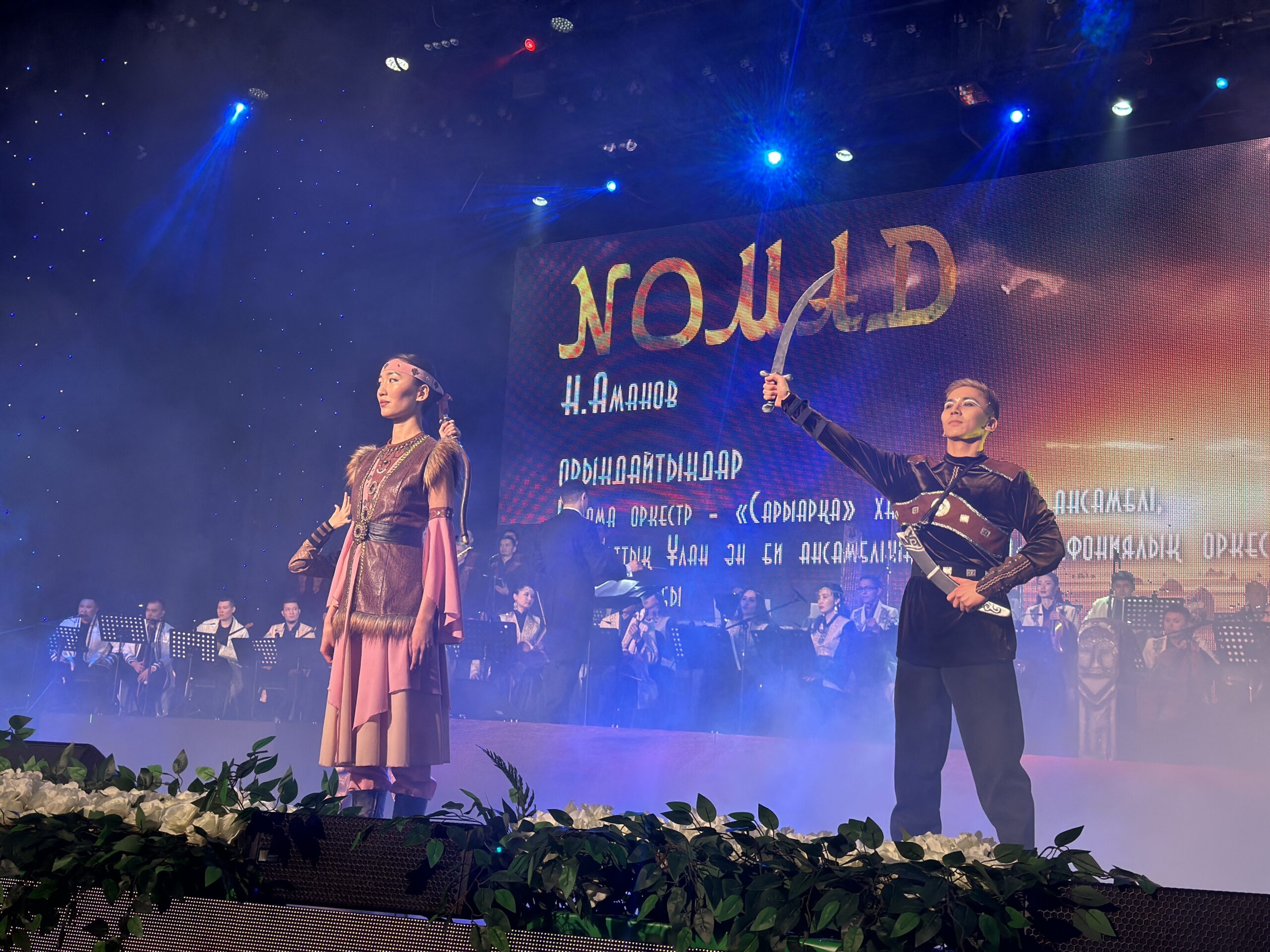ASTANA – The State Academic Philharmonic, named after Erkegali Rakhmadiyev, delighted the Astana audience with traditional Kazakh musical pieces in modern processing at Nomads’ Fire concert on Feb. 26.

Nomads’ Fire concert showcased Kazakh tradition in a series of songs and dance performances. Photo credit: The Astana Times
The name of the concert is illustrative, suggesting a conflation of nomadic passion, culture and wisdom in a series of song, instrumental and dance performances.
Combining national instruments with classical ones makes an ethnic innovation piece, largely because it is a pleasure to hear the spaciousness of traditional instruments augmented by rare but mighty sounds generated by a classical violin or drum.

Women in kimeshek (traditional headgear of married women) remind the audience of the Kazakh folklore tradition. Photo credit: The Astana Times
Organizers describe the concert as “a bridge between the past and the future, transporting the listeners across centuries and cultures.”
“Our mission is to recreate and transform the musical heritage of nomads and countries of the Turkic world, adding modern sounds of ethno-funk, ethno-rock and ethno-jazz rock,” reads the message.
The concert opened with a music piece performed by the Saryarka folk music ensemble, philharmonic chamber choir and ALEM contemporary choreography ballet, portraying the valor and spirit of Kazakh warriors through music and dance.
It also featured masterpieces by contemporary Kazakh composers such as Togzhan Zhakhin, Karagoz Gasimova, Yedil Kusainov, alongside cherished Kazakh folks songs such as “Aykarakoz,” (Beauty with dark eyes) “Yekeuin-ai,” (You two) and “Karay kozim” (My dark-eyed).

Blend of traditional and classical music styles was displayed during the Nomads’ fire concert. Photo credit: The Astana Times
Nothing illuminates sacred Kazakh music more than shankobyz instrument. Performed by Kusainov in “Bulbul Zaman,” the piece contains the elements of ethno-rock. Kusainov engages deeply with the shankobyz making guttural sounds combined with metallic tones of the instrument that echo the vast expanses of the Kazakh steppes and the ancient shaman customs.
It takes a choir of elderly women in kimeshek (traditional headgear of married women) to remind the audience of the Kazakh folklore tradition that passed songs and music from the older generation to the younger. Traditional songs performed by respected elders and grandmothers reassert the sometimes overlooked heritage.
The convergence of artists from different backgrounds often sparks creative genius, prompting the organizers to invite an artist to paint live during the whole performance. The paintings served as visual interpretations, capturing the essence of the musical and choreographic journey unfolding on stage.


